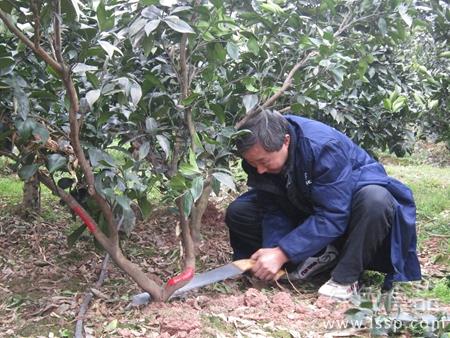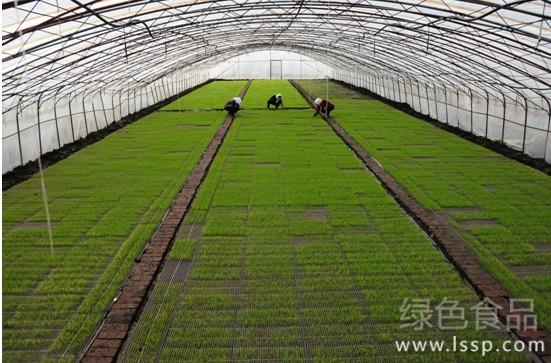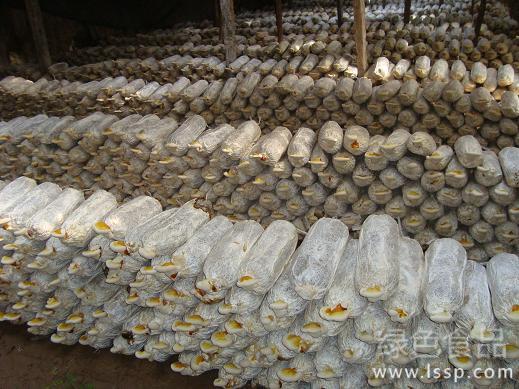Spring management measures of citrus with rising temperature and increasing insect pests

Citrus management
In spring, the dormancy period of citrus is over, the root system begins to move, the spring bud germinates and the flower bud appears. With the rise of temperature, diseases and insect pests will occur one after another. therefore, the fertilizer and water management and pest control of citrus in spring are very important.
1. Fertilizer and Water Management of Citrus in Spring
1. Fertilizer and Water Management of Young Citrus trees
For the young trees that survived last autumn, fertilization should follow the principle of "eat less and eat more". Foliar spraying is the main method for 1-2-year-old young trees, supplemented by surface fertilization. The concentration of fertilizer on the ground should be sparse, and nitrogen fertilizer should be used as the main fertilizer, and properly matched with phosphorus and potassium fertilizer to promote root growth and make young trees produce more new shoots. For young trees, the citrus orchard soil should be turned over shallowly in February to loosen the soil and strengthen soil permeability. Before spring shoot germination, one shoot-promoting fertilizer (mainly available nitrogen fertilizer, supplemented by phosphorus fertilizer) was applied to promote spring shoot germination and root growth, combined with phosphorus and potassium fertilizer and other fertilizers to achieve balanced fertilization. Because the root growth range of young trees is small and the fertilizer absorption capacity is weak, the amount of fertilizer application should be applied frequently and repeatedly, and the application method can be applied in annular ditch instead of spreading.
two。 Fertilizer and Water Management of Adult trees
Adult trees need a lot of nitrogen, phosphorus, potassium and various trace elements before flowering. Results the pre-bud fertilizer was mainly nitrogen, which was properly mixed with phosphorus and potassium fertilizer. If the fruit amount of the previous year is less, the moderate growth of the tree can be applied less or not; if the fruit of the previous year is more, but the fruit-picking fertilizer is not applied or less, the pre-bud fertilizer must be applied. Generally from late January to mid-February, 0.2 kg urea and 0.2-0.3 kg compound fertilizer should be applied to each adult citrus tree. While spraying boron fertilizer in full bloom, 0.3% urea solution was added for foliar spraying. In order to make the citrus absorb enough nutrients in the full flowering stage and improve the fruit setting rate, the pre-flowering fertilizer should be carried out 20 days before the flowering stage, and the application method should be strip ditch application, not spreading, and timely irrigation after fertilization.
3. Fertilizer and Water Management of aged trees
The characteristic of the old tree is that the spring shoot is the main fruiting branch, so we should increase the amount of pre-bud fertilizer, promote the spring shoot to lay the foundation for the next year's fruit, and the fertilizer is mainly nitrogen fertilizer, with phosphorus and potassium fertilizer.
4. Clean up the drainage ditches inside and outside the orchard and remove stagnant water to avoid stagnant water on rainy days, affecting root growth and even rotting roots, causing flowers and fruits to fall. In the dry and hot weather for more than 10 consecutive days, it is necessary to irrigate in time to keep the soil moist and loose, which is conducive to root group water absorption and fertilizer absorption.
II. Pruning of oranges in spring
Pruning principle: pruning should depend on the strength of the tree, the amount of fruit and the amount of flowers, and grasp the pruning amount and pruning period. If the tree potential is strong, the amount of fruit is normal, and the amount of flowers is large, the amount of pruning should be increased appropriately, and the time of pruning can be appropriately earlier; while for orange trees with high fruit yield, weak tree potential and less flowers last year, the amount of pruning should be light, and the time of pruning can be postponed appropriately.
Object of pruning: on the basis of winter pruning, the pruning of autumn and late autumn shoots in spring should be the main task. That is, cut off all the late autumn shoots and properly cut or cut part of the autumn shoots to promote and improve the quality of flower buds. Attention should be paid to the thinning or truncation treatment of aging fruiting branches (groups), crossed branches and overlapping branches. In addition, for orange trees with too high crown, the method of sawing big branches should be used to reduce the crown, improve the light conditions inside the crown, promote the emergence of new shoots inside the crown, and gradually form a three-dimensional fruiting pattern.
III. Techniques for protecting flowers and fruits of citrus
Apply Xiehua fertilizer and strong fruit fertilizer to improve the fruit setting rate. For citrus trees with large flower potential deviation, when Xiehua is 70%, a high-quality and quick-acting fertilizer is applied once, depending on the size of the crown, generally applying 45% potassium sulfate compound fertilizer 0.3-0.4 kg per plant, while for trees with normal or small flowers, Xiehua fertilizer is only applied with organic fertilizer and phosphorus and potash fertilizer to inhibit the emergence of summer shoots and protect fruit. Stable fruit fertilizer potassium fertilizer plus appropriate amount of phosphate fertilizer or foliar fertilizer, strong fruit fertilizer should be applied compound fertilizer plus potash fertilizer. Extra-root topdressing should be sprayed with 0.2% potassium dihydrogen phosphate twice after spring bud germination to before flowering, nucleotides were sprayed on overcast and rainy days, 0.1% borax was added once, and foliar fertilizer was sprayed 2-3 times in combination with pest control or fruit protection in young fruit stage.
IV. Timely prevention and control of diseases and insect pests
Do a good job in the prevention and control of the main insect pests (flower bud maggots, mites, etc.) that cause falling flowers and fruits and reduce the quality. When the citrus bud mung bean is the size, the ground spray under the canopy is chosen the day after rain to kill the unearthed bud maggot adults. When the flower buds begin to turn white, spray the crown with dichlorvos solution to kill the spawning bud maggot adults. The chemical control of the red spider should depend on the insect situation. If the red spider occurs seriously before the spring bud, the stone sulfur mixture should be used to spray the crown of the whole garden once; when the tender leaves turn green after the spring shoot germination, if the red spider occurs seriously, it should be sprayed with acaricidal agents such as "Tiannuohuer No. 1".
- Prev

Wet seedling raising technology of early rice: easy to operate and strong adaptability.
Wet seedling raising technology of early rice: easy to operate and strong adaptability.
- Next

Seven simple and feasible preservation methods of edible bacteria
Seven simple and feasible preservation methods of edible bacteria
Related
- Fuxing push coffee new agricultural production and marketing class: lack of small-scale processing plants
- Jujube rice field leisure farm deep ploughing Yilan for five years to create a space for organic food and play
- Nongyu Farm-A trial of organic papaya for brave women with advanced technology
- Four points for attention in the prevention and control of diseases and insect pests of edible fungi
- How to add nutrient solution to Edible Fungi
- Is there any good way to control edible fungus mites?
- Open Inoculation Technology of Edible Fungi
- Is there any clever way to use fertilizer for edible fungus in winter?
- What agents are used to kill the pathogens of edible fungi in the mushroom shed?
- Rapid drying of Edible Fungi

